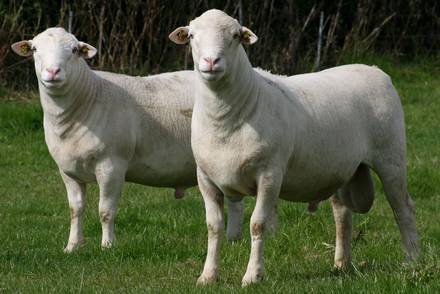
| BREED
|
NSW
|
VICT
|
QLD
|
SA
|
WA
|
TAS
|
ACT
|
AUST |
| Merino - millions | 36.65 |
15.47 |
13.91 |
15.09 |
31.29 |
0.69 |
0.1 |
113.19 |
| % |
63.2 |
57.5 |
97.2 | 84.1 |
94.2 |
13.5 | 81 | |
| Other
- millions |
11.8 |
4.73 |
0.08 |
0.9 |
0.57 |
2.88 |
0 |
20.96 |
| Comebacks
-millions |
2.05 |
2.29 |
0.1 |
0.81 |
0.82 |
0.93 |
0 |
7 |
| Crossbreds
- millions |
7.5 |
4.4 |
0.22 |
1.14 |
0.54 |
0.59 |
0.02 |
14.41 |
| Total
- millions |
58.00 |
26.89 |
14.31 |
17.94 |
33.21 |
5.08 |
0.12 |
155.56 |




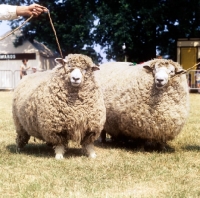
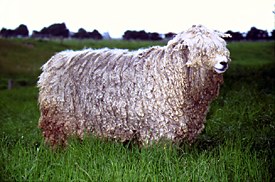

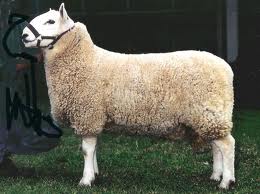
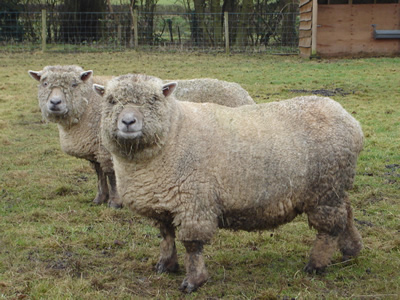
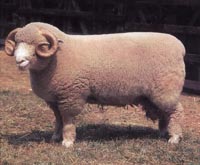




The animal is characteristically barrel shaped with short, dullish black or white hair on the head. A short, loose light covering of hair and wool (wool predominating on the forequarter) with a natural clean kemp underline, is a typical breed standard
An even distribution of a thin layer of fat compliments the breed.
The Dorper sheds its fleece avoiding the need for mustering for shearing, crutching and fly control.
There is little difference between blackheaded and whiteheaded Dorpers - the choice is a matter of target market preference.
The Dorper are an economical breed because of their excellent feed utilization and conversion, they don't need shearing, crutching and mulesing, and they are disease resistan
Meat production
Purebred Dorper rams reach a liveweight of 90-120 kg and ewes 50-80kg. The Dorper carcass has a good conformation and fat distribution.
Trials and producer experience in Australia indicate that it should be possible to breed Dorper-Merino F1 lambs with a bodyweight of 36kg at 105-120 days, to produce a carcass of about 16kg.
Adaptable:
The Dorper is now well adapted in South Africa to a variety of climatic and conditions. It thrives in arid to semi-tropical areas and 100mm-760mm rainfall.
Hardy
The Dorpers have the ability to thrive in harsh conditions. They were developed to be turned off quickly from arid, extensive grazing conditions in South Africa and have the potential to be produced successfully in a wide range of climatic conditions in Australia.
Fertile
The Dorper is one of the most fertile of the sheep breeds, with potential lambing intervals of only 8 months. Lambing percentages in excess of 150% (2.25 lambs per annum) are possible and 100% is feasible for most area.
Short lambing intervals have various advantages, of which greater selection possibilities and the sale of larger numbers of lambs are the most important.
Good mothering qualities
The Dorper ewe is a very good mother and protective of her young. Multiple births are common, with some instances of triplets recorded. Lambs are extremely mobile at birth and survival rates are high.
The Dorper ewe produces a large quantity of milk, aiding lamb survival and early growth.
Good grazing habits
They are non-selective grazers. Experience so far suggests that Dorpers can adapt to most grazing conditions. There is evidence that they prefer fibre to grains and they respond well to good quality hay.
Purebred lambs will start to graze in the first few days after birth. F1 lambs after about two weeks.
The Dorper can be advantageously incorporated into under-utilized pastures of lesser quality, thus converting a poor asset into profit.
Continuous breeding season
The Dorper is polyoestrus (can breed continually, with no defined season). Their breeding intervals can be as short as 8 months or 3 times in 2 years. Running rams with ewes continuously is one option that may stimulate reproduction, however it is also likely that ewes will adjust their fertility according to conditions.
Fast growing
Dorper lambs have an inherent growth potential (ability to graze at an early age) They grow rapidly and can attain a high weaning weight
Dorpers respond well to increased planes of nutrition, giving growers the potential to increase weights rapidly in response to market demands.
Markets can be developed in four key areas:
Dorper's fast growth rates allow for early marketing, with the potential to fill market supply shortfalls.
